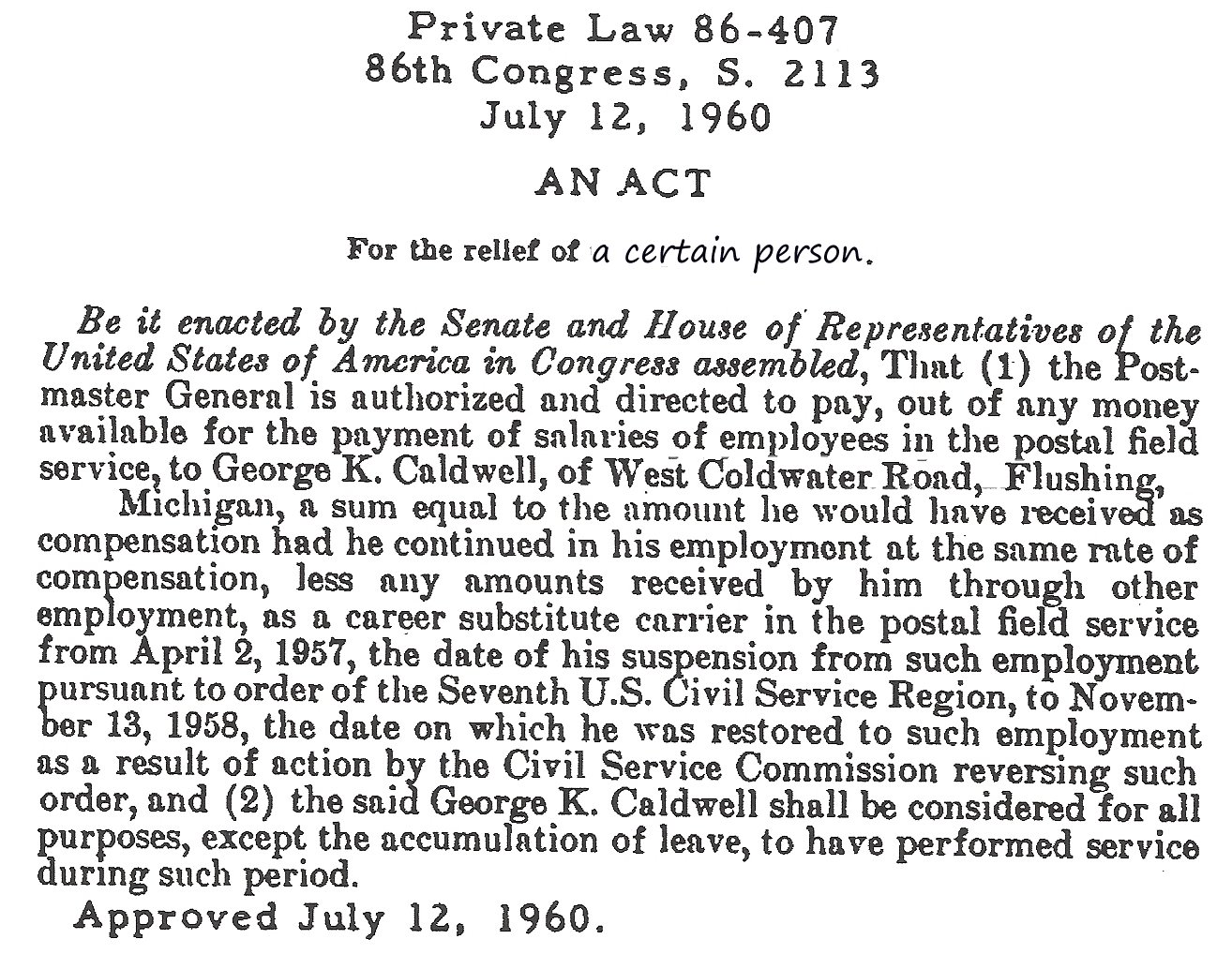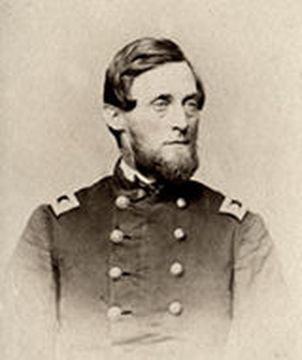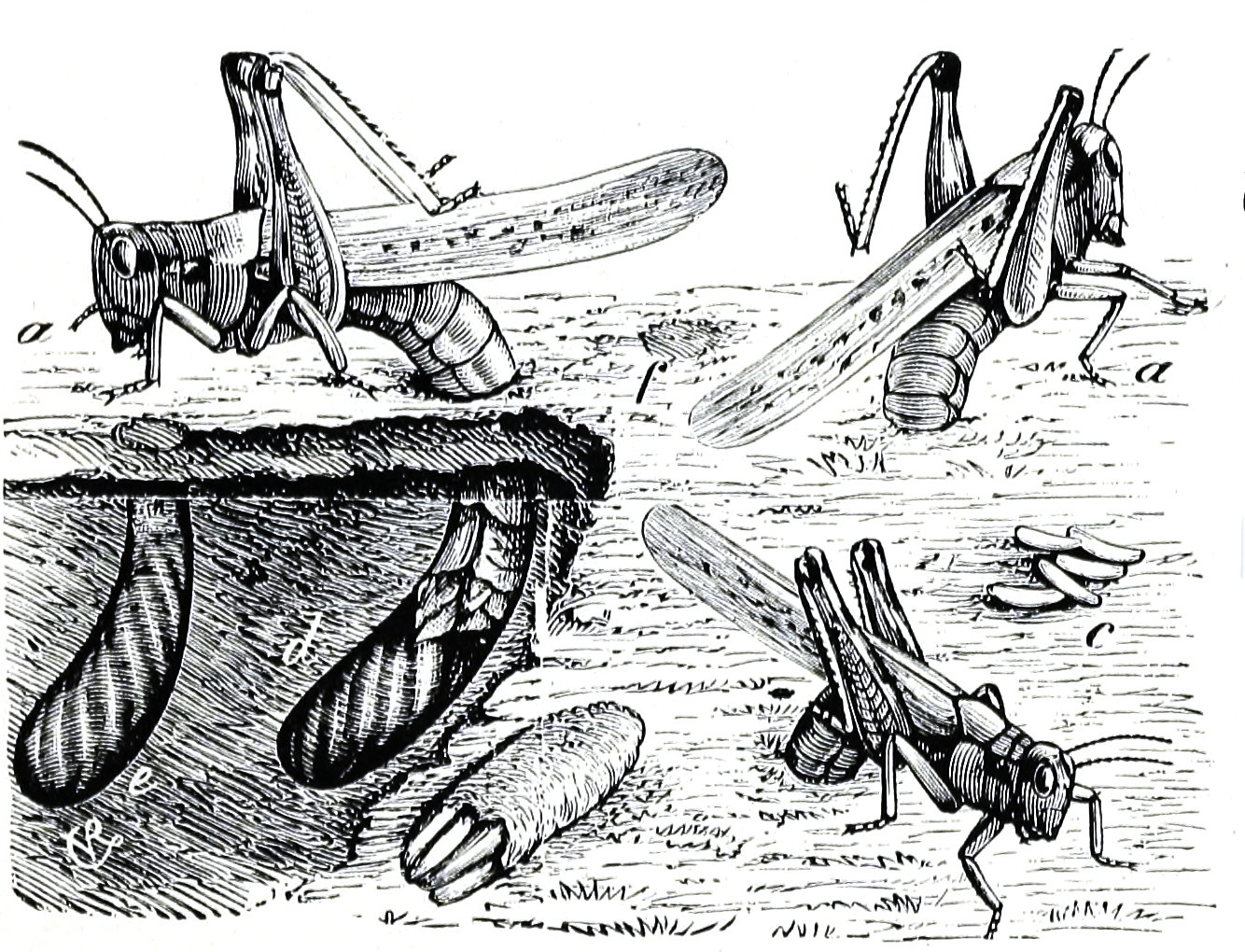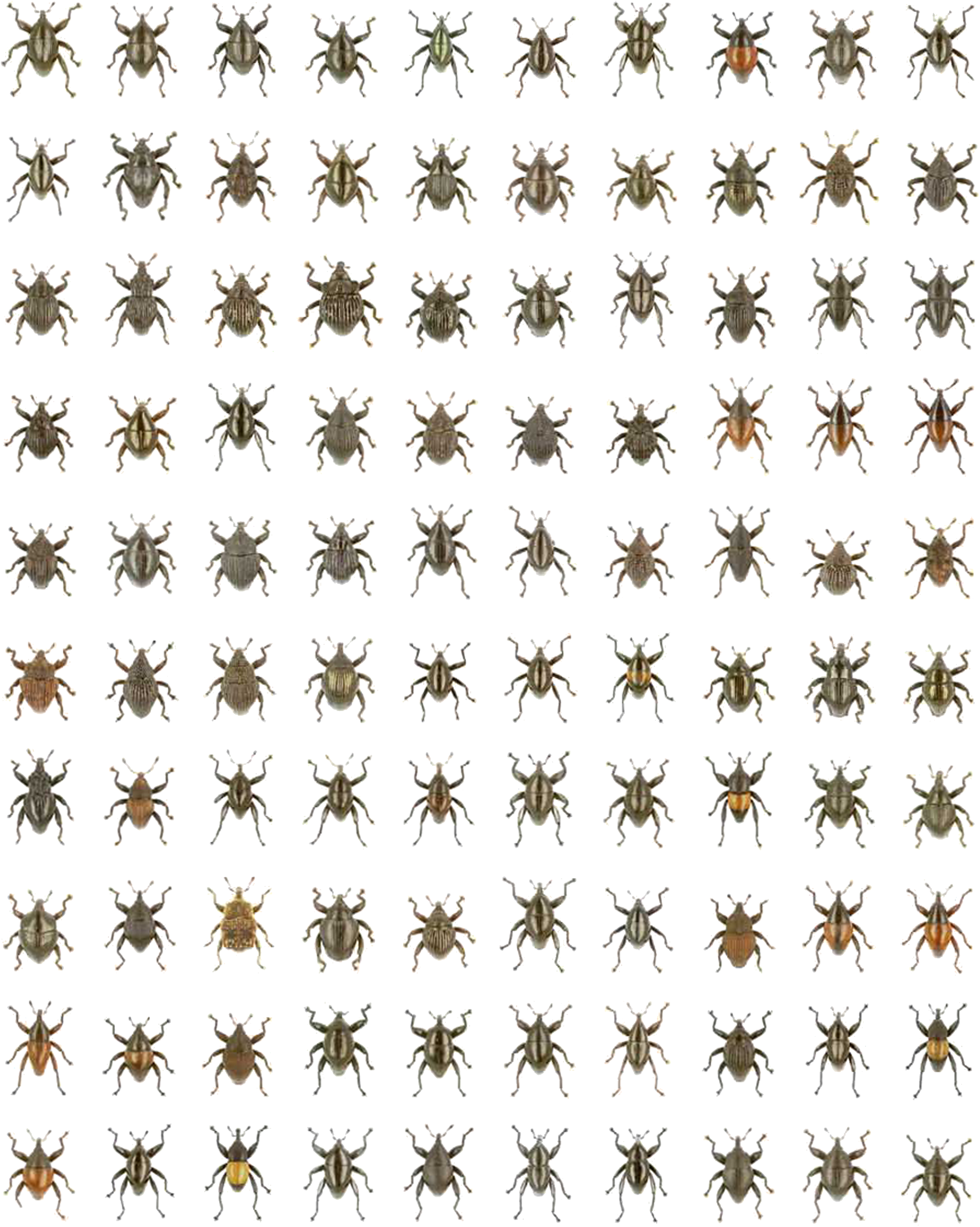|
United States Entomological Commission
The United States Entomological Commission was established by an Act of Congress in 1877 as a department under the United States Geological and Geographical Survey of the Territories headed by Ferdinand Vandeveer Hayden. The commission was created to find a solution for the Rocky Mountain locust that plagued much of the American West at that time. The original commission was allotted an $18,000 budget with a staff that included three skilled entomologists who were to be appointed by the Secretary of the Interior. The Entomological Commission’s first annual report to Congress was published in 1878; their last was printed in 1902.First and annual report of the United States Entomological commission for ... By Geological Survey (1877) The commission largely came about through the urging of two entomologists, Charles Valentine Riley and Cyrus Thomas both of whom, along with Alpheus Spring Packard Alpheus Spring Packard Jr. LL.D. (February 19, 1839 – February 14, 1905) was an Amer ... [...More Info...] [...Related Items...] OR: [Wikipedia] [Google] [Baidu] |
Entomology
Entomology () is the science, scientific study of insects, a branch of zoology. In the past the term "insect" was less specific, and historically the definition of entomology would also include the study of animals in other arthropod groups, such as arachnids, myriapods, and crustaceans. This wider meaning may still be encountered in informal use. Like several of the other fields that are categorized within zoology, entomology is a taxon-based category; any form of scientific study in which there is a focus on insect-related inquiries is, by definition, entomology. Entomology therefore overlaps with a cross-section of topics as diverse as molecular genetics, behavior, neuroscience, biomechanics, biochemistry, systematics, physiology, developmental biology, ecology, morphology (biology), morphology, and paleontology. Over 1.3 million insect species have been described, more than two-thirds of all known species. Some insect species date back to around 400 million years ago. Th ... [...More Info...] [...Related Items...] OR: [Wikipedia] [Google] [Baidu] |
United States Department Of The Interior
The United States Department of the Interior (DOI) is one of the executive departments of the U.S. federal government headquartered at the Main Interior Building, located at 1849 C Street NW in Washington, D.C. It is responsible for the management and conservation of most federal lands and natural resources, and the administration of programs relating to Native Americans, Alaska Natives, Native Hawaiians, territorial affairs, and insular areas of the United States, as well as programs related to historic preservation. About 75% of federal public land is managed by the department, with most of the remainder managed by the Department of Agriculture's Forest Service. The department was created on March 3, 1849. The department is headed by the secretary of the interior, who reports directly to the president of the United States and is a member of the president's Cabinet. The current secretary is Deb Haaland. Despite its name, the Department of the Interior has a different ro ... [...More Info...] [...Related Items...] OR: [Wikipedia] [Google] [Baidu] |
Act Of Congress
An Act of Congress is a statute enacted by the United States Congress. Acts may apply only to individual entities (called Public and private bills, private laws), or to the general public (Public and private bills, public laws). For a Bill (law), bill to become an act, the text must pass through both houses with a majority, then be either signed into law by the president of the United States, be left unsigned for ten days (excluding Sundays) while Congress remains in session, or, if vetoed by the president, receive a congressional override from of both houses. Public law, private law, designation In the United States, Acts of Congress are designated as either public laws, relating to the general public, or private laws, relating to specific institutions or individuals. Since 1957, all Acts of Congress have been designated as "Public Law X–Y" or "Private Law X–Y", where X is the number of the Congress and Y refers to the sequential order of the bill (when it was enacted). ... [...More Info...] [...Related Items...] OR: [Wikipedia] [Google] [Baidu] |
United States Geological And Geographical Survey Of The Territories
The United States Geological and Geographical Survey of the Territories was established by an act of Congress on 2 March 1867 as an agency under the Department of the Interior (later the General Land Office) tasked to complete a geographical survey of the State of Nebraska which had been admitted to the United States, Union the day before. The scope of the survey eventual grew to include all the Territories of the United States, American territories adjacent to the Rocky Mountains encompassing hundreds of thousands of square miles. The survey over its existence was headed by Ferdinand Vandeveer Hayden, Dr. Ferdinand Vandeveer Hayden who published a number of reports between 1867 and 1883 on the region’s geography, geology, topography, ethnology, philology, paleontology and other allied subjects. Congress originally appropriated $5,000 in 1867 for the survey of Nebraska and a similar amount the following year to survey the Wyoming Territory. As the survey’s workload increased over ... [...More Info...] [...Related Items...] OR: [Wikipedia] [Google] [Baidu] |
Ferdinand Vandeveer Hayden
Ferdinand Vandeveer Hayden (September 7, 1829 – December 22, 1887) was an American geologist noted for his pioneering surveying expeditions of the Rocky Mountains in the late 19th century. He was also a physician who served with the Union Army during the Civil War. Early life Ferdinand Hayden was born in Westfield, Massachusetts. As a young boy he was fascinated with all nature and wildlife, which led him into the field of medicine. He worked in Cleveland under Jared Potter Kirtland and thereafter in Albany, NY, where he worked under James Hall, of the ''Geological Survey of New York''. He graduated from Oberlin College in 1850 and from the Albany Medical College in 1853, where he attracted the notice of Professor James Hall, state geologist of New York, through whose influence he was induced to join in an exploration of Nebraska Territory, with Fielding B. Meek to study geology and collect fossils. Hall sent him on his first geological venture in the summer of 1853. Be ... [...More Info...] [...Related Items...] OR: [Wikipedia] [Google] [Baidu] |
Rocky Mountain Locust
The Rocky Mountain locust (''Melanoplus spretus'') is an extinct species of grasshopper that ranged through the western half of the United States and some western portions of Canada with large numbers seen until the end of the 19th century. Sightings often placed their swarms in numbers far larger than any other locust species, with Albert's swarm, one famous sighting in 1875 estimated at in size (greater than the area of California), weighing 27.5 million tons and consisting of some 12.5 trillion insects, the greatest concentration of animals ever speculatively guessed, according to ''Guinness World Records''. Less than 30 years later, the species was apparently extinct. The last recorded sighting of a live specimen was in 1902 in southern Canada. Because a creature so ubiquitous was not expected to become extinct, very few specimens were ever collected (though a few preserved remains have been found in Knife Point Glacier, Wyoming and Grasshopper Glacier (Montana), Grasshopper ... [...More Info...] [...Related Items...] OR: [Wikipedia] [Google] [Baidu] |
American West
The Western United States (also called the American West, the Far West, and the West) is the region comprising the westernmost states of the United States. As American settlement in the U.S. expanded westward, the meaning of the term ''the West'' changed. Before about 1800, the crest of the Appalachian Mountains was seen as the western frontier. The frontier moved westward and eventually the lands west of the Mississippi River were considered the West. The U.S. Census Bureau's definition of the 13 westernmost states includes the Rocky Mountains and the Great Basin to the Pacific Coast, and the mid-Pacific islands state, Hawaii. To the east of the Western United States is the Midwestern United States and the Southern United States, with Canada to the north, and Mexico to the south. The West contains several major biomes, including arid and semi-arid plateaus and plains, particularly in the American Southwest; forested mountains, including three major ranges, the Sierra Neva ... [...More Info...] [...Related Items...] OR: [Wikipedia] [Google] [Baidu] |
Entomologists
Entomology () is the scientific study of insects, a branch of zoology. In the past the term "insect" was less specific, and historically the definition of entomology would also include the study of animals in other arthropod groups, such as arachnids, myriapods, and crustaceans. This wider meaning may still be encountered in informal use. Like several of the other fields that are categorized within zoology, entomology is a taxon-based category; any form of scientific study in which there is a focus on insect-related inquiries is, by definition, entomology. Entomology therefore overlaps with a cross-section of topics as diverse as molecular genetics, behavior, neuroscience Neuroscience is the scientific study of the nervous system (the brain, spinal cord, and peripheral nervous system), its functions and disorders. It is a multidisciplinary science that combines physiology, anatomy, molecular biology, development ..., biomechanics, biochemistry, systematics, physiology, develo ... [...More Info...] [...Related Items...] OR: [Wikipedia] [Google] [Baidu] |
United States Secretary Of The Interior
The United States secretary of the interior is the head of the United States Department of the Interior. The secretary and the Department of the Interior are responsible for the management and conservation of most federal land along with natural resources, leading such agencies as the Bureau of Land Management, the United States Geological Survey, Bureau of Indian Affairs and the National Park Service. The secretary also serves on and appoints the private citizens on the National Park Foundation Board. The secretary is a member of the United States Cabinet and reports to the president of the United States. The function of the U.S. Department of the Interior is different from that of the interior minister designated in many other countries. As the policies and activities of the Department of the Interior and many of its agencies have a substantial impact in the Western United States, the secretary of the interior has typically come from a western state; only one secretary since 1 ... [...More Info...] [...Related Items...] OR: [Wikipedia] [Google] [Baidu] |
Charles Valentine Riley
Charles Valentine Riley (18 September 1843 – 14 September 1895) was a British-born American entomologist and artist. He was one of the first individuals to use biological pest control and authored over 2,400 publications. He convinced Congress to create the United States Entomological Commission and was among the founders of the American Association of Economic Entomologists. Early life The son of a Church of England minister, Charles Valentine Riley was born on 19 September 1843 in London's Chelsea district. When he was around eleven his parents, the Rev. Charles and Mary (née Valentine) Riley, chose to further his education in Europe. There he excelled at art and natural history attending private schools in Dieppe, France and later Bonn, Germany. After the death of his father he was brought home to Britain to enroll in a public school there. Sometime later his mother remarried which may have played a part in his decision, taken at the age of seventeen, to cross the Atlant ... [...More Info...] [...Related Items...] OR: [Wikipedia] [Google] [Baidu] |
Cyrus Thomas
Cyrus Thomas (July 27, 1825 – June 26, 1910) was an American ethnologist and entomologist prominent in the late 19th century and noted for his studies of the natural history of the American West. Biography Thomas was born in Kingsport, Tennessee, on July 27, 1825, and was of German and Irish descent. He was educated in village schools in the Kingsport area and an academy student at Jonesboro, Tennessee, as well as being self-educated. His mother hoped he would join the medical field, so he studied anatomy and physiology, but he was uninterested in medicine and took to the study of law. He was admitted to the Illinois bar in 1851 and practiced in Murphysboro. Between his study of medicine and law his father, Dr. John Logan, appointed him to a county seat to "take charge of some business". From 1851 to 1854 Thomas served as county clerk of Jackson County, Illinois. He later abandoned the practice of law, and in 1865 became superintendent of some Jackson County schoo ... [...More Info...] [...Related Items...] OR: [Wikipedia] [Google] [Baidu] |
Alpheus Spring Packard
Alpheus Spring Packard Jr. LL.D. (February 19, 1839 – February 14, 1905) was an American entomologist and palaeontologist. He described over 500 new animal species – especially butterflies and moths – and was one of the founders of ''The American Naturalist''.Cockerell (1920) Early life He was the son of Alpheus Spring Packard Sr. (1798–1884) and the brother of William Alfred Packard. He was born in Brunswick, Maine, and was Professor of Zoology and Geology at Brown University in Providence, Rhode Island, from 1878 until his death. He was a vocal proponent of Neo-Lamarckism during the eclipse of Darwinism.Sorenson (1995) Career & Works His chief work was the classification and anatomy of arthropods, and contributions to economic entomology, zoogeography, and the phylogeny and metamorphoses of insects. Packard was appointed to the United States Entomological Commission in 1877 where he served with Charles Valentine Riley and Cyrus Thomas.Mallis (1971) He wrote school text ... [...More Info...] [...Related Items...] OR: [Wikipedia] [Google] [Baidu] |

.jpg)






